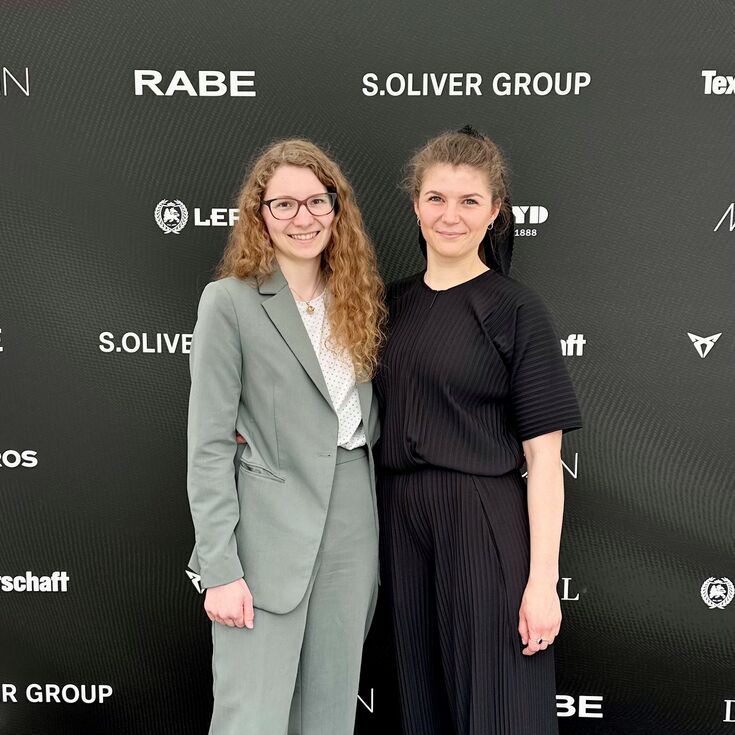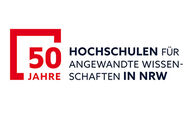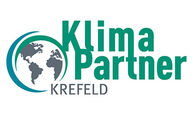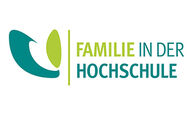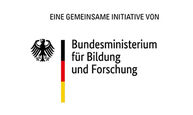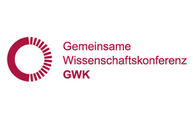The students Antonia Dannenberg and Nadine Bullerdiek from the Faculty of Textile and Clothing Technology at the Hochschule Niederrhein have received distinctions from the Wilhelm Lorch Foundation. Dannenberg received the prize in the technology category for her work on "Graphene in alpine winter sportswear", while Bullerdiek won over the jury with her work in English on "Dyeing of Poly(lactic acid) Fibres for Circular Textile Products". The prize is endowed with 5000 euros.
In the work of Antonia Dannenberg (supervising professors Dr. Robert Groten & Karin Stark), different polyester samples equipped with graphene are examined with regard to their thermal conductivity. Graphene is a two-dimensional carbon atom layer with unique properties. Many outdoor clothing manufacturers are launching more and more products equipped with graphene. The material is becoming increasingly important in alpine winter sports clothing in particular.
Incorporated into textile surfaces or clothing, graphene is said to give them the property of conducting heat from heated areas of the clothing to cooler areas. This heat balance would potentially allow athletes to consume less energy and thus perform better. Dannenberg's work addressed the question of whether graphene actually helps optimize the thermal conductivity of textiles.
The research conducted showed that at the current stage of research, heat is not yet distributed across the textile as desired. No sample showed any discernible changes. At this point, transferring the properties of graphene to textile surfaces is at an early stage of research. Accordingly, from a research point of view, commercialization of textile graphene products is not yet sufficiently feasible. However, due to the worldwide interest, it is expected that in the near future the material can be integrated into clothing in a way that is suitable for everyday use and optimizes functionality. Antonia Dannenberg rounded off her technical work with an additional exciting design work on the topic of sportswear.
Nadine Bullerdiek's Bachelor's thesis ("Dyeing of Poly(lactic acid) Fibres for Circular Textile Products") dealt with the dyeing of PLA fibers for circular textile products (supervising professor: Dr. Maike Rabe).
PLA fibers (poly(lactic acid)) are considered a promising alternative to conventional polyester fibers. They are bio-based, recyclable and biodegradable under industrial conditions. This makes them suitable for the production of recyclable textiles.
The problem: PLA fibers are susceptible to hydrolysis, especially under alkaline conditions and high temperatures. This means that dyeing in a water bath can cause the fibers to lose strength. In her work, the award winner investigated the effects of the dyeing parameters of time, temperature and pH on the strength and color intensity of a PLA twisted yarn. This made it possible to determine the ideal dyeing conditions with the highest possible color intensity and the lowest possible loss of strength for dyeing PLA twisted yarn with disperse dyes. The work was carried out in cooperation with the Dutch start-up Arapaha.
The Wilhelm Lorch Foundation bears the surname of the founder of Deutscher Fachverlag and TextilWirtschaft, who died in 1966. Each year, it honors projects and talented young professionals in the textile and fashion industry in the categories of creation, business, technology and continuing training in retail.


